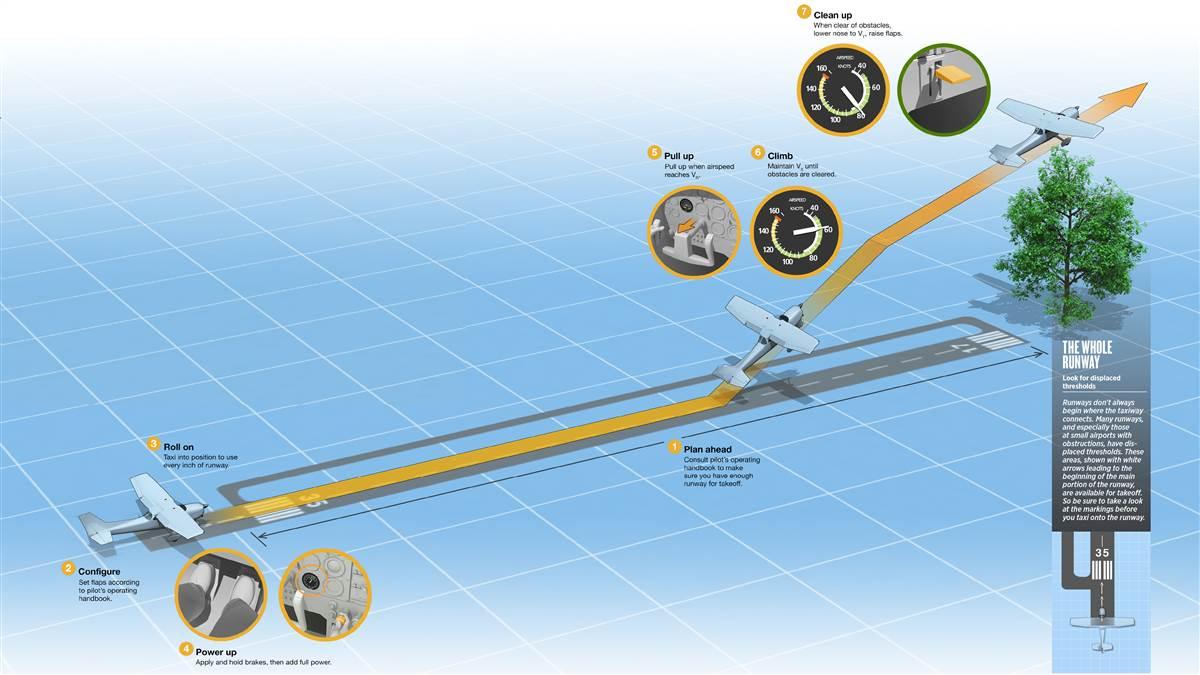Don’t let your long, home airport runway lull you into a sense that a slow, methodical acceleration and liftoff can happen everywhere. Short-field takeoffs use a technique that gets the wheels off the ground fast, and the airplane climbing as steeply as possible. Some of the best and most memorable runways are short, tucked-away strips of grass or concrete. The ability to comfortably operate from them will open your horizons.
Good short-field takeoffs start with good planning. Before you land somewhere, make sure you will have enough runway length take off again. Consult the pilot’s operating handbook for distance required and give yourself a safe margin of 50 percent before even trying a runway.
For most airplanes with flaps the handbook will specify the proper setting for a short-field takeoff. Flaps, when set to less than about half, add more lift than drag, so this is an important step.
Although a short and soft field may require a running, sweeping taxi onto the runway, a true short, paved strip calls for a drag race. Use every inch of runway you can (see “The Whole Runway,” p. 35), making sure the nosewheel or tailwheel is straight before coming to a stop.
At the end of the runway, hold the brakes and apply full power. Note on the tachometer that static rpm is where it should be, and then release the brakes.
When you reach best rotation airspeed, pull up. Patience is key here. Assuming you ran your calculations correctly and the airplane is performing as it should, you have to trust your machine by holding neutral elevator and waiting until VR.
Hold VX as you climb above any obstacles. As tempting as it may be to pull harder and fly slower than VX, remember that the manufacturer tried all the speeds and decided that the published VX was the most efficient way to gain altitude in the shortest distance. When you’re safely above the obstacles, lower the nose to VY, raise the flaps, and enjoy the ride.




